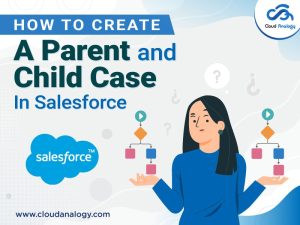Sharing is caring!
Workflow requirements are becoming more complex, day by day. There is waiting between each stage of the workflow. The waiting period between steps creates a costly gap for your business resulting in less productivity, lower customer satisfaction, and lost revenue. The admins are expected to quickly configure, deploy, and maintain seamless business workflows more so in the scenario of a distributed team.
Flow Orchestrator is designed to help managers/admins quickly build automated, multi-user, multi-stage multi-step business processes, with clicks, not code. You can link different flow, and authorization processes together, explaining that steps need to be completed sequentially, or together.
Rather than rebuilding your existing Flows to support a new feature, Flow Orchestrator is built with your current flow and allows you to use it in any new Orchestration. Flow helps to maximize your impact and create the best user experiences. Flow Orchestrator helps you to increase the impact of your new and existing flows with two new features – steps and stages.
In this post, we will discuss the use of a flow orchestrator, the structure of the flow orchestrator, and the steps to find a flow orchestrator
Use of Flow Orchestrator
There are many different ways Flow Orchestrator can be used to benefit businesses. A few examples would be Service Delivery Orchestration (where multiple parties need to take various steps during a client delivery process in a specific order), public authorization, or escalation process where the record may need to be passed on to different team members depending on the terms that apply to the Orchestra, and, of course, the example I used when I discussed the Flow Orchestrator with our New Staff Orchestra.
Structure of Flow Orchestrator
Flow Orchestrator comprises stages, steps, and flow.
Stages – A phase is a set of linked steps organized into stages. The stages are performed sequentially, and a single-stage orchestration stage can continue at a specific time. It sets out the conditions that must be met for the stage to be considered complete.
Steps – They are built in stages and can be performed sequentially or simultaneously. User interaction is required in the intelligent stages. No user interaction is required in the basic phases.
Flow – It is a piece of Salesforce Automation used in the orchestration process. Screen flow is required in the intuitive stages, while the auto-launched flow is required in basic steps.
Now, it is time to discuss the steps to find a flow orchestrator.
Steps to Find Flow Orchestrator
- From Setup enter “Flows” in the Quick Find box.
- Click on the flows
- Click on the New Flow
- Click on the All + Templates section of the New Flow page as shown in the below figure.
- Select Flow Orchestrator from the list
- The Flow Orchestrator section has Auto-launched Orchestration and Record-Triggered Orchestration. There are two ways to launch a Flow Orchestration. Select the type of flow which we want to create.
- Click on Next
Example: Create a Flow Orchestrator when the Ticket is created in the org
Let us take an example – Create a Flow Orchestrator when the Ticket is created in the org it will identify the ticket type and assign that ticket to the particular person.
The steps are as follows:
- Firstly, we have to select the Record Trigger flow from the list as shown in the below figure.
- After that, we have to select the Ticket object and the Trigger criteria.
- We can decide to identify the Inquiry Type of the Ticket whether the type is hardware or communication type.
- Then we can select the Interactive step for sending the hardware ticket to the hardware queue and the communication ticket to the communication queue.
- This flow will automatically assign the Ticket based on its Inquiry Type.
- We have to debug the Orchestration flow from the Orchestration Runs. For it, we have to type Orchestration Runs in the app launcher as shown in the below figure.
- We will be able to see the Status of the particular orchestration from here.
Conclusion
Salesforce Orchestrator was created to help admins quickly create sophisticated, multi-user, multi-step automated business processes with clicks, not code. A string of automation are created by Admins that may need to be assigned to various people for action along the way. So salesforce consulting companies use it for the purpose of complex business. Multi-step processes for many users that work automatically are a complete game changer with the fact that Flow Orchestrator can use the existing Auto-launched Flows and Screen Flows will definitely make it easier for Managers.

Ajay Dubedi
CEO | Founder
Ajay Dubedi, the founder and CEO of Cloud Analogy, is a prominent Salesforce Sales, Service, and Marketing cloud Consultant with a rich expertise in handling challenging business models. Ajay has assisted and implemented solutions in industries comprising Banking, Health Care, Networking, Education, Telecommunication and Manufacturing. Ajay is globally acclaimed for his extensive experience in APEX Programming, VisualForce pages, Triggers, Workflows, Page Layouts, Roles, Profiles, Reports & Dashboards.Hire the best Salesforce Implementation Partner. Choose Cloud Analogy, the world's most preferred Salesforce Implementation Company that provides custom CRM Implementation services.










